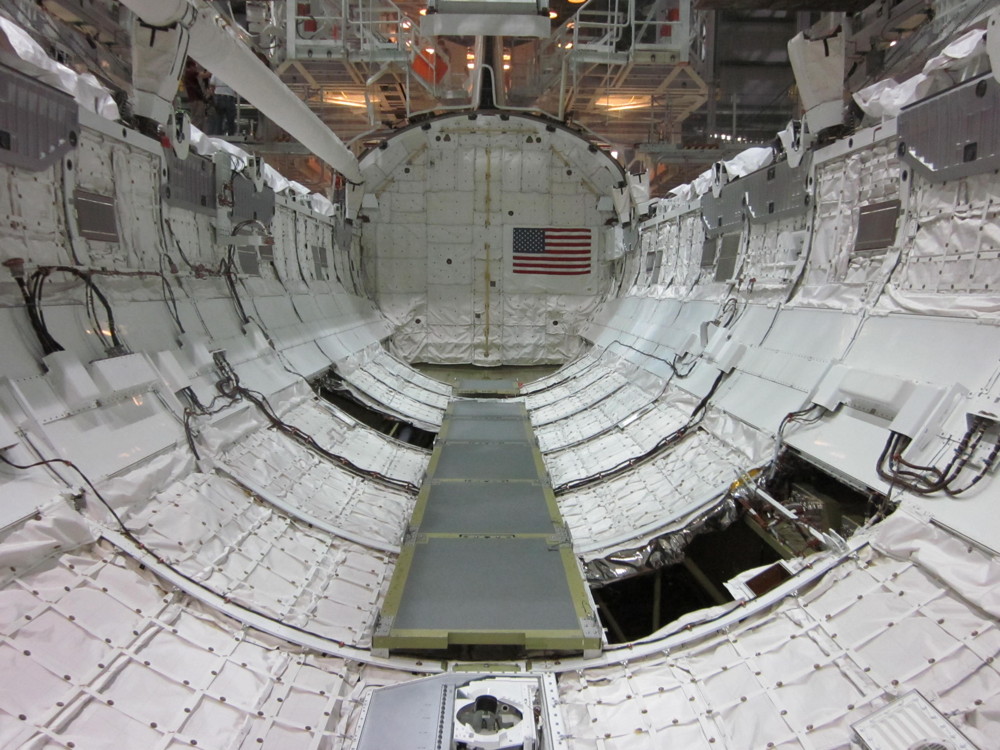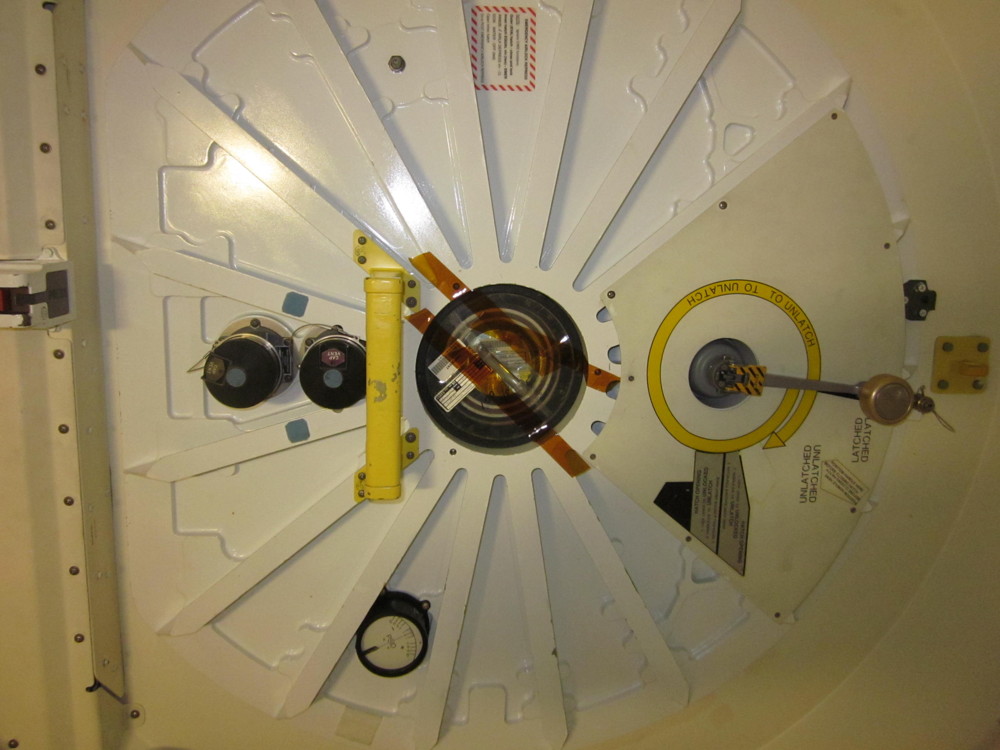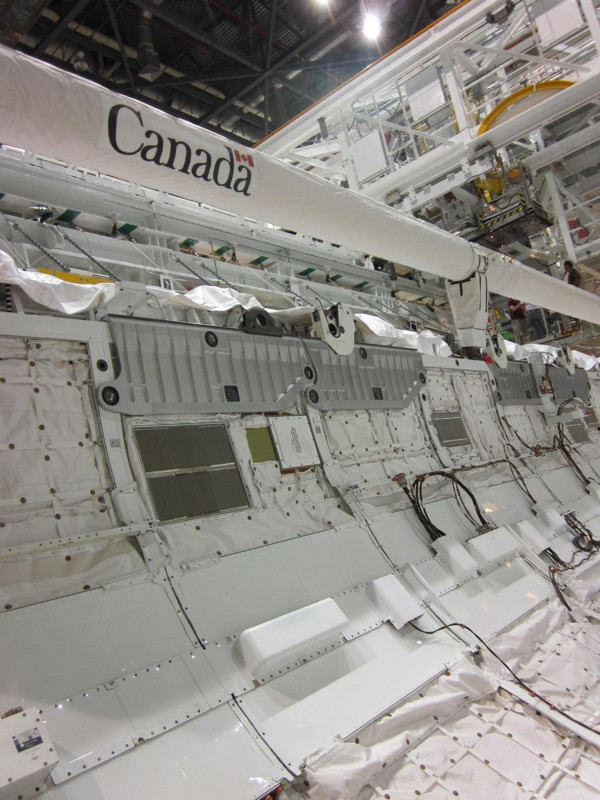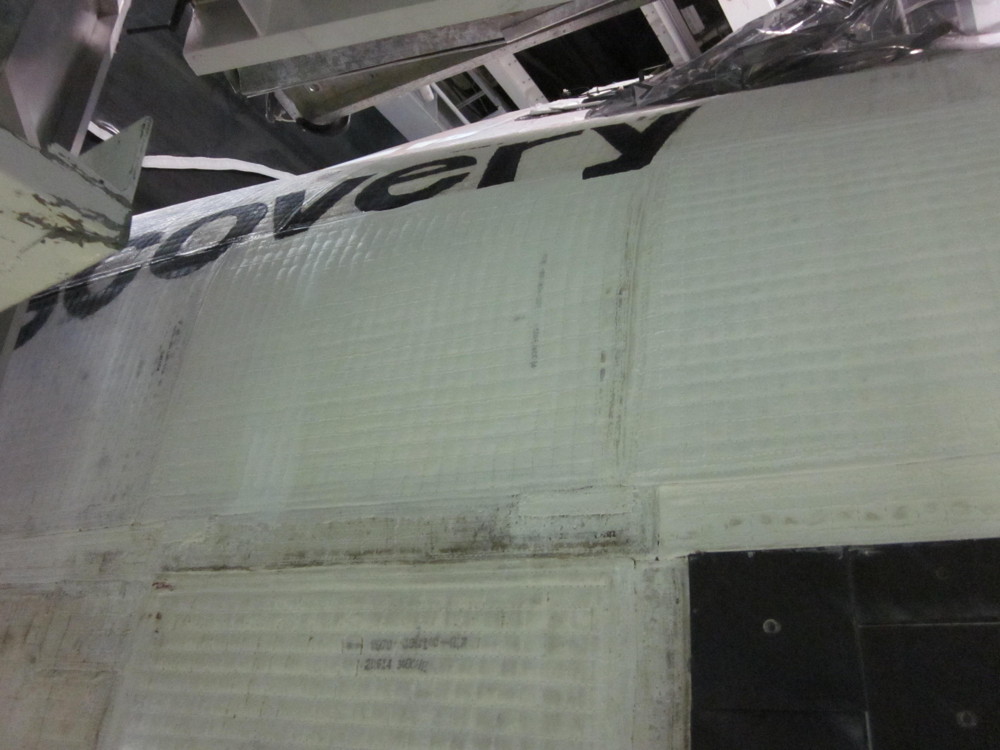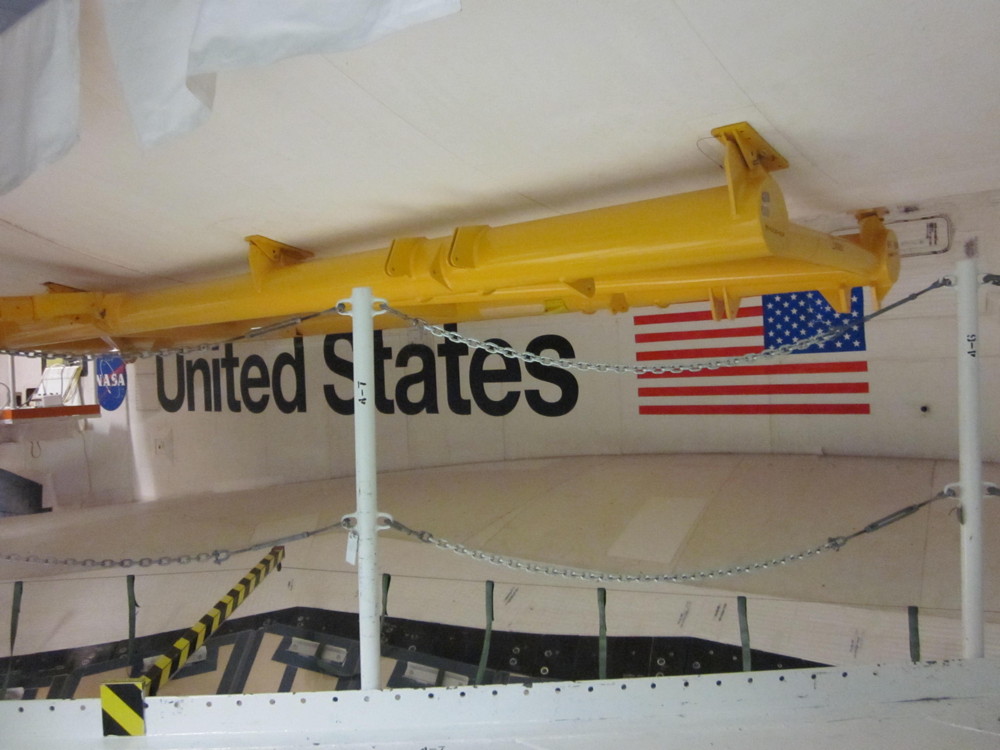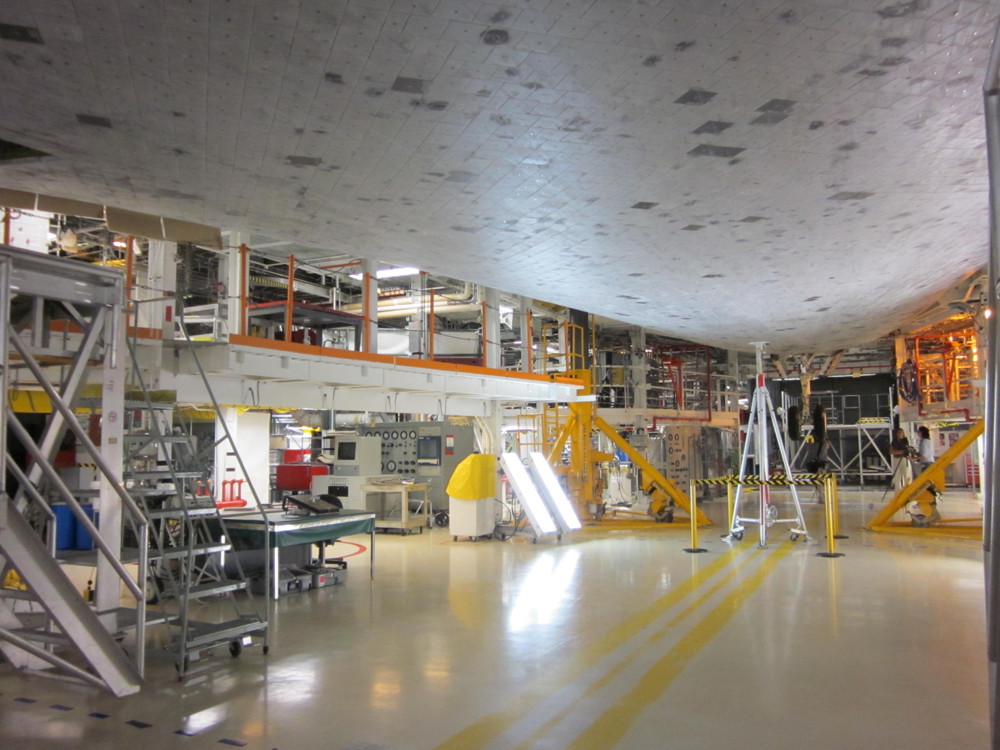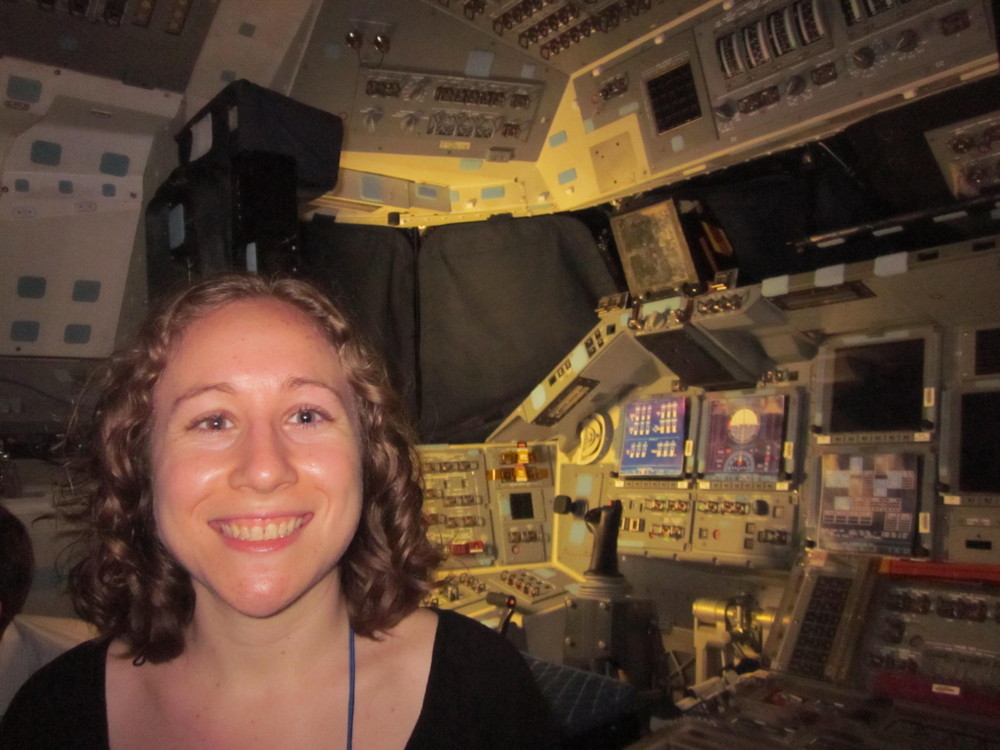Gallery: Inside Shuttle Discovery, a Reporter's-Eye View
Cargo Bay
The view of shuttle Discovery's payload bay from inside the orbiter, with the iconic American flag at the rear. The huge cargo area is 15 feet (4.6 meters) wide and 60 feet (18 m) long.
Front Door
When Discovery was docked at the International Space Station, this hatch opened up into the station to allow astronauts to transfer through.
Canadarm
On the left side of Discovery's cargo bay, the shuttle's Canadarm rests. The robotic arm, officially called the Shuttle Remote Manipulator System (SRMS), is 50 feet (15 m) long and has six joints that allow the arm to move in multiple directions.
Clara on the Middeck
Here I am inside shuttle Discovery's middeck, with the tunnel behind me leading to the docking hatch and payload bay.
Discovery's Nose
The nose of space shuttle Discovery looks exposed with its Forward Reaction Control System (FRCS) removed. This engine, in conjunction with the Orbital Maneuvering Systems thrusters at the shuttle's rear, is used to move the orbiter once it's already in space. Because it's considered hazardous, the thrusters have been removed and will be replaced with a dummy unit before the shuttle goes on public display.
Shuttle Up Close
I was in a state of continual amazement to be so close to the space shuttle. This view shows part of the name "Discovery" printed on the right side of the orbiter.
Discovery's Side
A bit farther back on Discovery's right side are the NASA "meatball" logo, the American flag, and the words "United States."
Breaking space news, the latest updates on rocket launches, skywatching events and more!
Wheels Down
Discovery's huge Michelin tires are almost as tall as me! Above my head are the orbiter's sensitive thermal protection tiles, which shield Discovery from the heat of re-entry through Earth's atmosphere.
Discovery's Underbelly
The view from Discovery's underbelly shows the sensitive heat shield tiles that protect the orbiter from the fiery temperatures of re-entry.
Clara in the Cockpit
The feeling of being inside such an extraordinary vehicle is incredible. I tried to comprehend just how far it had traveled (148 million miles, actually), how much it had accomplished (39 missions), and the many brave men and women who've sat in these seats.

Clara Moskowitz is a science and space writer who joined the Space.com team in 2008 and served as Assistant Managing Editor from 2011 to 2013. Clara has a bachelor's degree in astronomy and physics from Wesleyan University, and a graduate certificate in science writing from the University of California, Santa Cruz. She covers everything from astronomy to human spaceflight and once aced a NASTAR suborbital spaceflight training program for space missions. Clara is currently Associate Editor of Scientific American. To see her latest project is, follow Clara on Twitter.
